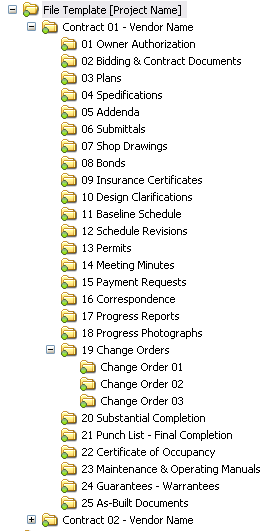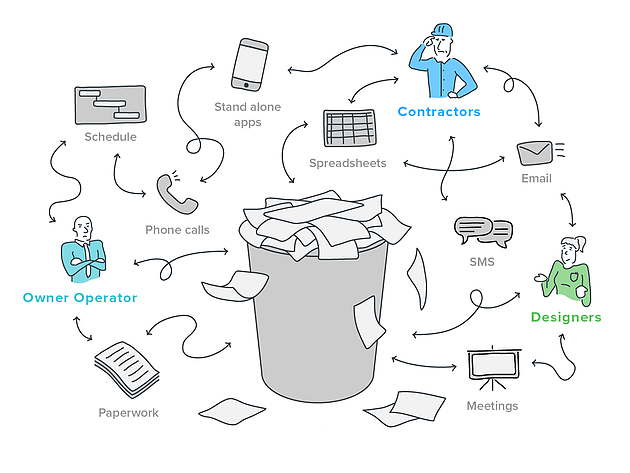Opening Performance: The Advantages of Construction Document Management Operating Systems
Opening Performance: The Advantages of Construction Document Management Operating Systems
Blog Article
Optimizing Project Collaboration: Designer's Best Practices in Building And Construction Record Management
In the detailed realm of building tasks, the effective monitoring of building files stands as a keystone for success. Designers, with their thorough interest to information and innovative layout solutions, are entrusted with orchestrating a harmony of sources, stakeholders, and timelines. However, among this complexity exists a sixty-four-thousand-dollar question: how can engineers improve partnership procedures to enhance job end results? By checking out vital techniques such as leveraging cloud-based systems, developing durable interaction procedures, and making certain information protection, architects can raise their file management techniques to brand-new elevations.
Leveraging Cloud-Based Systems
By transitioning from traditional paper-based systems to shadow options, architects can simplify partnership, enhance record availability, and improve total job efficiency. This availability promotes smooth communication and control amongst job stakeholders, leading to fewer mistakes and hold-ups in the building procedure.
Additionally, cloud-based platforms offer a protected environment for saving sensitive job details, providing security, regular back-ups, and user permission setups to protect information honesty. Architects can additionally benefit from the scalability of cloud options, allowing them to adjust storage space ability and performance based upon task requirements. Generally, leveraging cloud-based systems empowers designers to optimize their building and construction file monitoring procedures, driving greater partnership, performance, and success in their tasks.
Executing Version Control Solution
Having actually established the benefits of cloud-based systems in construction file monitoring, architects can now boost their file control procedures by applying Variation Control Systems. Version Control Equipment (VCS) are crucial tools that track changes in files, making sure that employee are always dealing with the most recent and most accurate information. By executing VCS, engineers can maintain a centralized database where all job records are kept, enabling seamless collaboration while minimizing the danger of errors and variation problems.
One trick advantage of Version Control Systems is the ability to track the total background of paper changes, enabling users to return to previous versions if needed (construction document management). This function is especially useful in construction projects where layout models and adjustments are typical. In addition, VCS assists in much better interaction amongst employee by supplying a clear audit route of who made specific changes and when they were made. This openness not only improves accountability yet likewise aids in settling conflicts or discrepancies that might emerge throughout the project lifecycle.
Establishing Interaction Methods
To guarantee effective and efficient project coordination, architects must establish clear and durable interaction methods within their construction document management processes. This system can be a task management software application, email threads, or cloud-based storage services.
Furthermore, communication methods need to likewise include guidelines on just how to manage disputes, change orders, and urgent concerns that may arise throughout the job lifecycle. Establishing an organized approach to communication makes certain that all stakeholders get on the exact same page, promotes openness, and ultimately adds to the effective completion of the building and construction project.
Using BIM Software Program for Sychronisation
BIM software plays a pivotal duty in boosting sychronisation amongst project group participants in the building sector. Structure Information Modeling (BIM) facilitates cooperation by offering discover this info here a centralized platform where architects, designers, professionals, and various other stakeholders can interact in a collaborated fashion. Via BIM software application, task participants can access and upgrade a shared design which contains thorough information regarding the structure design, building parts, and job timetables.

Additionally, BIM software makes it possible for real-time partnership and communication among staff member, despite their physical place. Via cloud-based BIM platforms, project stakeholders can access the most up to date job information, track changes, and make educated decisions promptly. Generally, leveraging BIM software for control enhances task efficiency, performance, and eventually results in effective job end results.
Ensuring Data Protection and Compliance
In the world of construction paper management, safeguarding information honesty and ensuring regulative conformity are critical factors to consider for engineers and other job stakeholders. Architects have to execute robust protection measures to safeguard delicate task information from unauthorized access or violations. Making use of secure cloud storage options with encryption procedures and accessibility controls can help reduce dangers connected with information burglary or loss. Frequently upgrading software program and systems, performing security audits, and providing personnel training on data safety and security best practices are vital actions in preserving a safe setting for building and construction record monitoring.

Conclusion
In final thought, engineers can maximize task collaboration in construction file administration by leveraging cloud-based systems, applying variation control systems, developing interaction protocols, utilizing BIM software program for sychronisation, and making sure data protection and compliance. These ideal methods help simplify the building process, boost communication amongst project stakeholders, and enhance effectiveness in task distribution. By adhering to these standards, engineers can effectively handle building papers and assist in successful project end results.
Through BIM software program, project participants can access and upgrade a common his explanation model that consists of thorough information about the building style, building and construction parts, and task timetables.
Through cloud-based BIM platforms, project stakeholders can access the latest project information, track changes, and make notified choices without delay - construction document management. Overall, leveraging BIM software for control boosts task performance, efficiency, and eventually leads to successful project outcomes
In final thought, architects can optimize task cooperation in building and construction paper administration by leveraging cloud-based platforms, implementing version control systems, developing communication protocols, utilizing BIM software for control, and making certain information safety and security and compliance. These ideal techniques assist improve the construction process, boost communication among task stakeholders, and improve efficiency in task distribution.
Report this page